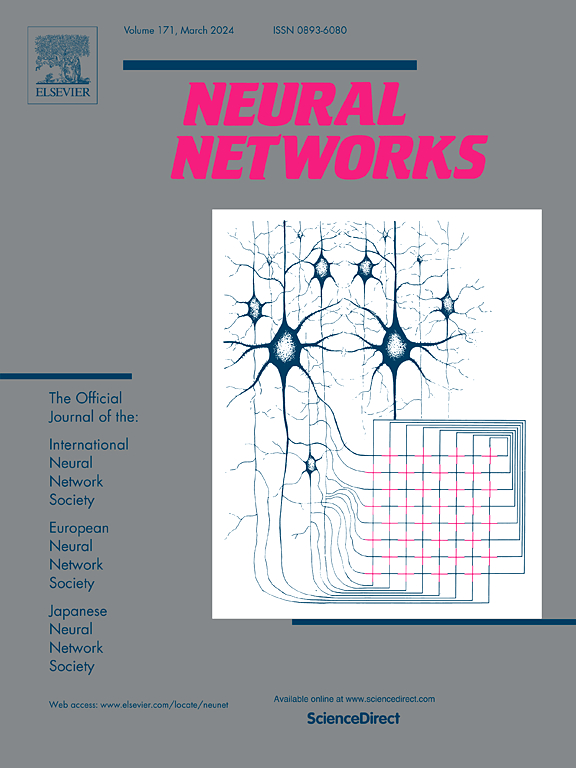Time series compression using quaternion valued neural networks and quaternion backpropagation
IF 6
1区 计算机科学
Q1 COMPUTER SCIENCE, ARTIFICIAL INTELLIGENCE
引用次数: 0
Abstract
We propose a novel quaternionic time series compression methodology where we divide a long time series into segments of data, extract the min, max, mean and standard deviation of these chunks as representative features and encapsulate them in a quaternion, yielding a quaternion valued time series. This time series is processed using quaternion valued neural network layers, where we aim to preserve the relation between these features through the usage of the Hamilton product. To train this quaternion neural network, we derive quaternion backpropagation employing the GHR calculus, which is required for a valid product and chain rule in quaternion space. Furthermore, we investigate the connection between the derived update rules and automatic differentiation.
We apply our proposed compression method on the Tennessee Eastman Dataset, where we perform fault classification using the compressed data in two settings: a fully supervised one and in a semi supervised, contrastive learning setting. Both times, we were able to outperform real valued counterparts as well as two baseline models: one with the uncompressed time series as the input and the other with a regular downsampling using the mean. Further, we could improve the classification benchmark set by SimCLR-TS from 81.43% to 83.90%.
使用四元数值神经网络和四元数反向传播的时间序列压缩
我们提出了一种新的四元数时间序列压缩方法,我们将长时间序列划分为数据片段,提取这些块的最小值,最大值,平均值和标准差作为代表性特征,并将它们封装在四元数中,从而产生四元数值时间序列。这个时间序列使用四元数值神经网络层进行处理,我们的目标是通过使用汉密尔顿积来保留这些特征之间的关系。为了训练这个四元数神经网络,我们使用GHR演算推导了四元数反向传播,这是四元数空间中有效的乘积和链式法则所必需的。此外,我们还研究了所导出的更新规则与自动微分之间的联系。我们将我们提出的压缩方法应用于田纳西伊士曼数据集,在两种设置中使用压缩数据执行故障分类:完全监督和半监督,对比学习设置。这两次,我们都能够优于真实值的对应对象以及两个基线模型:一个将未压缩的时间序列作为输入,另一个使用平均值进行常规下采样。进一步将SimCLR-TS设定的分类基准从81.43%提高到83.90%。
本文章由计算机程序翻译,如有差异,请以英文原文为准。
求助全文
约1分钟内获得全文
求助全文
来源期刊

Neural Networks
工程技术-计算机:人工智能
CiteScore
13.90
自引率
7.70%
发文量
425
审稿时长
67 days
期刊介绍:
Neural Networks is a platform that aims to foster an international community of scholars and practitioners interested in neural networks, deep learning, and other approaches to artificial intelligence and machine learning. Our journal invites submissions covering various aspects of neural networks research, from computational neuroscience and cognitive modeling to mathematical analyses and engineering applications. By providing a forum for interdisciplinary discussions between biology and technology, we aim to encourage the development of biologically-inspired artificial intelligence.
 求助内容:
求助内容: 应助结果提醒方式:
应助结果提醒方式:


